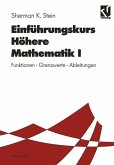The body of mathematics developed in the last forty years or so which can be put under the heading Singularity Theory is quite large. And the excellent introductions to this vast sub ject which are already available (for instance [AGVJ, [BGJ, [GiJ, [GGJ, [LmJ, [Mr], [WsJ or the more advanced [Ln]) cover necessarily only apart of even the most basic topics. The aim of the present book is to introduce the reader to a few important topics from ZoaaZ Singularity Theory. Some of these topics have already been treated in other introductory books (e.g. right and contact finite determinacy of function germs) while others have been considered only in papers (e.g. Mather's Lemma, classification of simple O-dimensional complete intersection singularities, singularities of hyperplane sections and of dual mappings of projective hypersurfaces). Even in the first case, we feel that our treatment is different from the introductions mentioned above - the general reason being that we give special attention to the aompZex anaZytia situation and to the connections with AZgebraia Geometry. We offer now a detailed description of the contents, pOint ing out special aspects and new material (i.e. previously un published, though for the most part surely known to the~ts!). Chapter 1 is a short introduction for the beginner. We recall here two basic results (the Submersion Theorem and Morse Lemma) and make a few comments on what is meant by the local behaviour of a function or of a plane algebraic curve.
Hinweis: Dieser Artikel kann nur an eine deutsche Lieferadresse ausgeliefert werden.
Hinweis: Dieser Artikel kann nur an eine deutsche Lieferadresse ausgeliefert werden.








